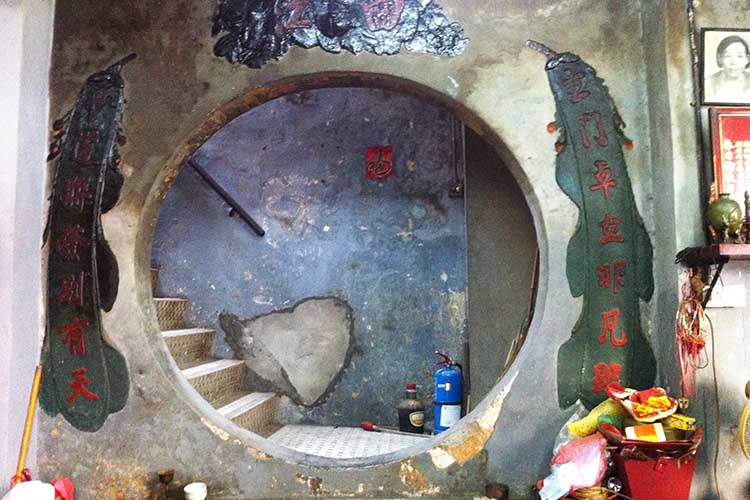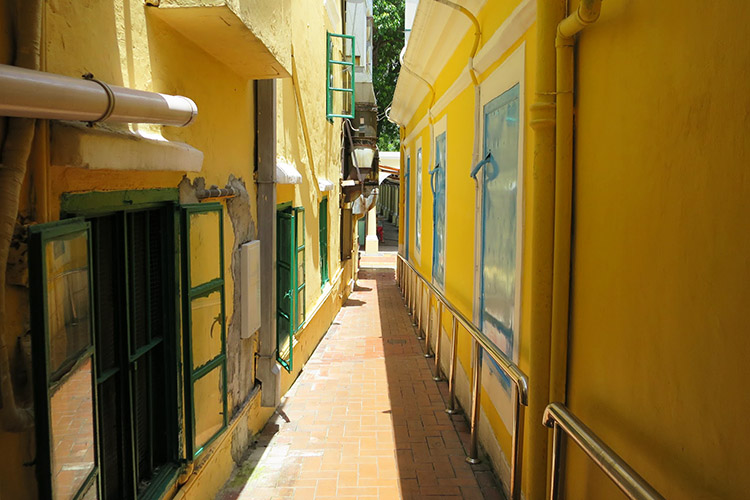
Take a walk through Macau's secret side with our pick of the islands' best hidden dives, unknown foods and unusual places.
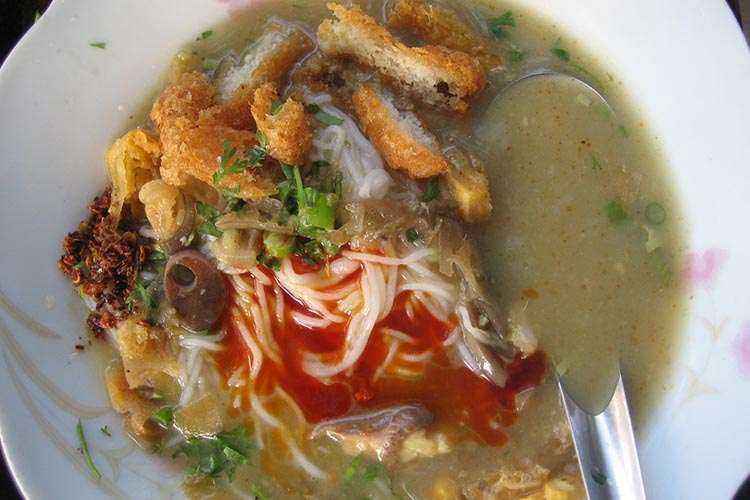
Much has been written about Macau’s Macanese, Portuguese and Chinese food, but less known is?the city’s Burmese cuisine. In the 1960s and 70s, following anti-Chinese riots in Rangoon, groups of Burmese of Chinese descent returned to China. Many of those originally from Fujian and Tai Shan chose to settle in Macau. The migrants missed the flavours of their adopted country, so eateries specialising in Burmese comfort food sprang up –?mostly in the area known as ‘three lamps district’, so named because of the street lamp in Rotundude Carlos da Maia. Among the handful of Burmese restaurants still around is Restaurante Birmanes Nga Heong (27F Rua De Fernao Mendes Pinto) which opened its doors in 1978 and still whips up a mean massinha de peixe (fish with noodles). This popular Burmese dish comprises a rich fish broth cooked with lemon, black peppercorn, cilantro, turmeric, chili, and banana tree stem that is eaten over rice vermicelli. It’s garnished with lime, and split chickpea fritters or Chinese donuts. The restaurant also serves delectable samosas and noodles in creamy Burmese coconut curry.
Mention design and Macau in the same breath, and the mind conjures up images of the flashy gargantuan monuments that litter the city’s skyline. But did you know Macau has a sword designer too? Antonio Concei??o Júnior , a former Director of the Museum of Macau, custom-designs blades for his own pleasure and for clients. Taking inspiration from his city, ancient cultures and modern life, Antonio makes original drawings that subsequently morph into a sleek work of art in the hands of a North American bladesmith. The charismatic artist whose repertoire spans fashion, jewellery, book covers and stamps, is equally adept at designing samurai swords, as he is sabres and cutlasses. One of his works features a Western-style blade with a guard inspired by the Harley Davidson wheel.
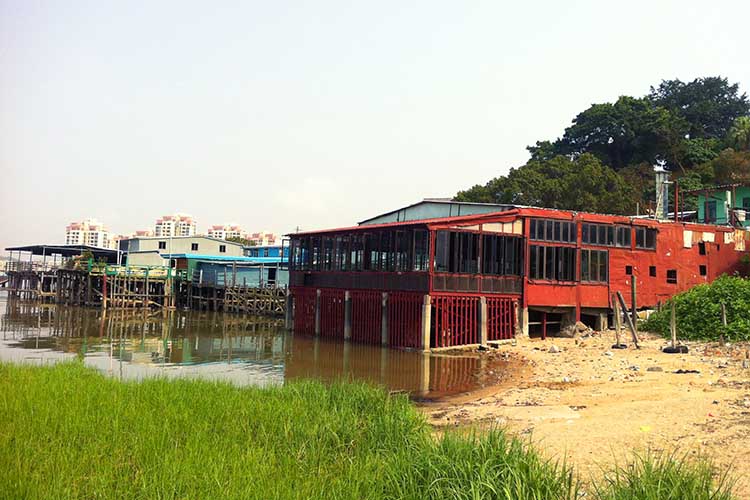
Macau’s skyline makes it hard to imagine the city was an idyllic fishing village up until the mid-19th century, when gambling was legalised. Now the only traces of that past are found in a sleepy corner of Coloane Island. Along Rua dos Navegantes in Coloane's old fishing village, with mainland China visible across the water, seemingly just a few stone skips away are stilt houses that extend like fat chopsticks out into the sea. These huts of green, red or blue corrugated metal were once landing spots for houseboats and offered shelter to folks who lived off the harvest from the sea. Now they’re?homes of fishermen's descendants or have been turned into shops selling dried salted fish.
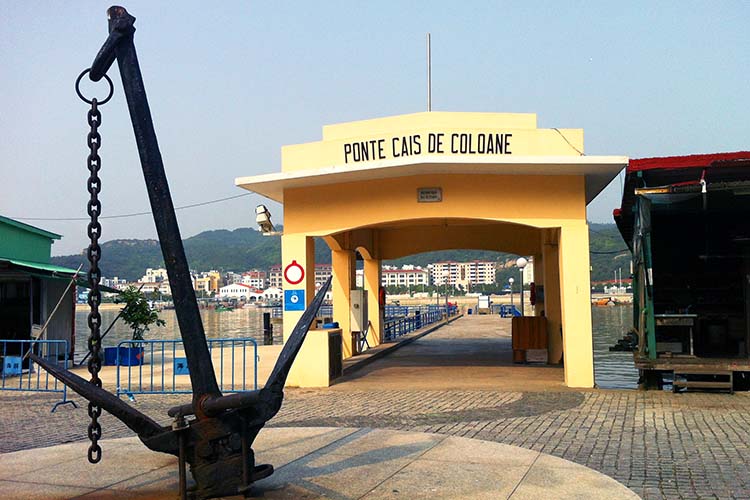
The last house is at Largo do Cais, the square just off Coloane’s old pier, where a coal tar-coated anchor rests on its concrete pedestal. From the square, a short slope to the right of the Servicos de Alfangega (Customs) building leads up to the cadaver of a boatyard, also on stilts. This cavernous shack of wood and zinc with chains and blocks dangling from eroded wooden beams, almost evokes the crime scene of a sadistic murder. But in fact, it is one of the last surviving reminders of Coloane’s glorious past as one of the main centres for wooden boat building in the Pearl River Delta.
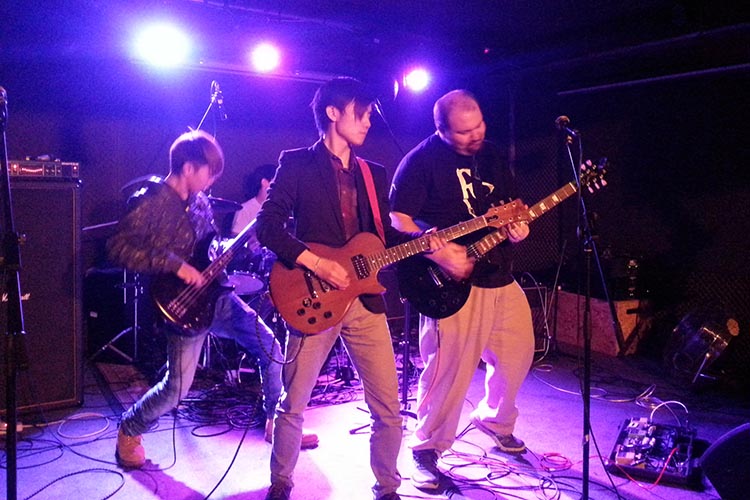
It’s hidden, it’s edgy, the mood is awesome. Anyone in the Pearl River Delta who know their post-rock from their math rock (and there aren’t many of them) have heard of Live Music Association?(LMA), the go-to place for indie and alternative music in Macau. From its location inside an industrial building, it’s hosted international acts, like Cold Cave, Buddhistson, Mio Myo and Pet Conspiracy, as well as local bands such as?WhyOceans – that’s post-rock by the way -- and Turtle Giant.
Yes, literature is very much alive in Macau, and we’re not talking about betting forms. Writers, artists and filmmakers from Macau, Asia and Portuguese-speaking regions come together in March for ten?brilliant days of poetry reading, literary discussion, film screening and cross-cultural performance at the Macau Literary Festival . Guests have included Chinese poet Bei Dao, Portuguese novelist Alfonso Cruz, Mozambican historian Jo?o Paulo Borges Coelho. Events are held all over town, including at some of Macau’s most atmospheric landmarks. English subtitles and/or interpretation are provided for events not conducted in English. Another wonderful way of getting to know the city is through the translated works of poetry and fiction published by the Association of Stories in Macau .
Macau has a laudable Museum of Art, but did you know that some of its best contemporary art is hidden inside an industrial building? Take the cranky lift to the third floor of Edificio da Fabrica de Baterias at 52 Estrada da Areia Preta, and you’ll find the Art for All gallery. Founded by artist James Chu, the gallery has taken Macau's art worldwide, including to the Venice Biennale. It holds monthly solo exhibitions featuring?Macau's top artists, such as painters Tong Chong and Konstantin Bessmertny, and photographer Frank Lei.
